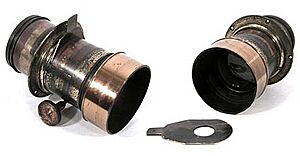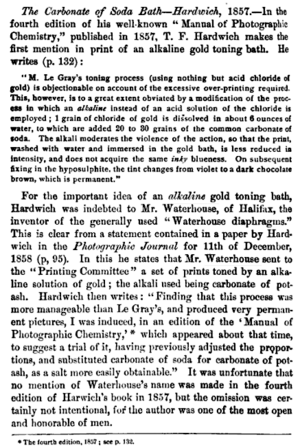John Waterhouse (astronomer) facts for kids
John Waterhouse (born August 3, 1806, died February 13, 1879) was a clever British scientist. He was an expert in studying the stars (an astronomer) and the weather (a meteorologist). He is best known for inventing something called "Waterhouse stops" for cameras, which help photographers control light.
Contents
Meet John Waterhouse: Scientist and Inventor
His Early Life and Home
John Waterhouse was born at Well Head House in Halifax, Yorkshire. He was the oldest son of John and Grace Elizabeth Waterhouse. Their home, Well Head, had huge gardens with special greenhouses. They even had six gardeners working there!
The family loved growing unusual plants. John Waterhouse brought a special fern called a todea superba all the way from New Zealand in 1860. This fern is now growing in the famous Kew Gardens in London. At his home, John Waterhouse also built his own observatory to watch the stars and a weather station to study the weather. Another scientist, Louis John Crossley, even came to study in his lab.
A Man of Many Talents
John Waterhouse was a very active and important person in his community and in science. In 1834, he became the President of the Halifax Mechanics' Institute. This was a place where people could learn about science and technology.
In the same year, he was chosen to be a Fellow of the Royal Society. This is a very important group of top scientists in Britain. He was also a Fellow of the Royal Astronomical Society, which means he was recognized as an important expert in astronomy.
In 1839, he traveled around the world. He did this to improve his health.
His Famous Inventions
John Waterhouse was also a keen photographer. He invented several useful things for cameras. One of his most famous inventions was the Waterhouse stop. This is a special metal plate with different-sized holes that photographers can put into a camera lens. It helps them control how much light gets into the camera and how sharp the picture looks.
He also invented a special chemical mixture called an alkaline gold toning bath. This bath was used to make photographs look better and last longer.
Studying the Weather and Stars
From 1866 to 1873, for eight years, John Waterhouse carefully watched the weather and the night sky from his home at Well Head. He wrote down all his detailed observations and published them in a book in 1874.
Later Life
John Waterhouse was also appointed as a Deputy Lieutenant of the West Riding of Yorkshire. This was an important local role, helping to represent the Crown in the area. He passed away at Well Head House in 1879.



